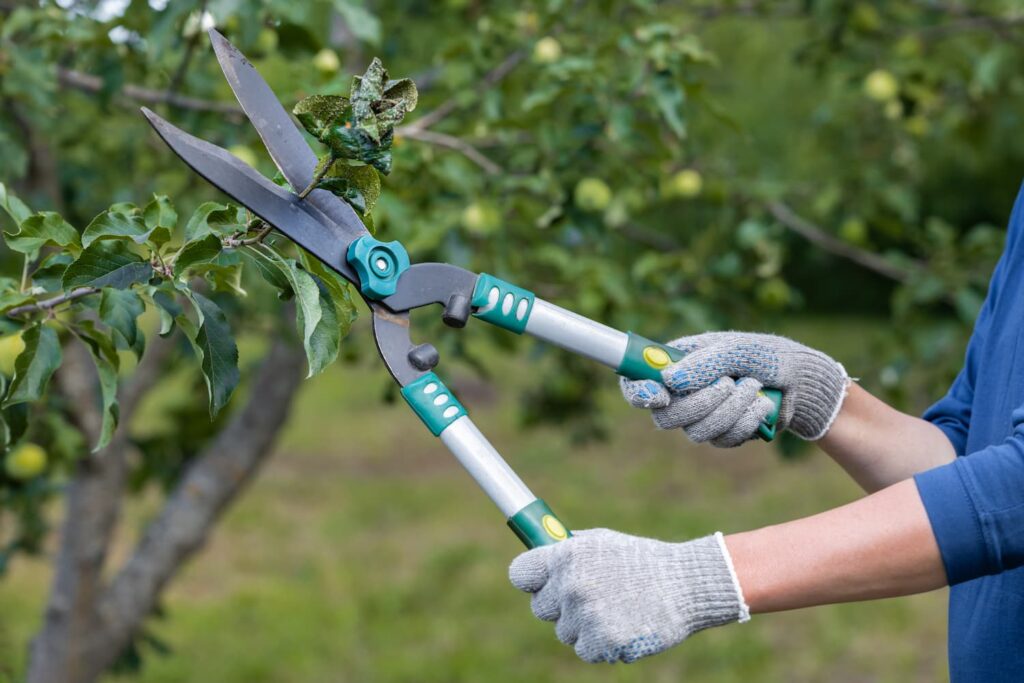Tree Disease Management in Texas. Tree diseases and tree fungi can cause significant damage to trees, affecting their health and longevity. As a tree owner, it is important to understand the various diseases and fungi that can afflict trees and how to properly manage them to protect the health and beauty of your trees.
Various Types of Diseases
There are many different types of Texas tree diseases, including bacterial diseases, viral diseases, and fungal diseases. Bacterial diseases are caused by bacteria that infect trees, often causing symptoms such as cankers, dieback, and leaf spot. Viral diseases are caused by viruses that infect trees, often causing symptoms such as mottled or distorted leaves and stunted growth. Fungal diseases are caused by fungi that infect trees, often causing symptoms such as leaf spots, root rot, and cankers.
Most Common Tree Diseases
One of the most common tree diseases is Dutch elm disease, which is caused by a fungus called Ophiostoma ulmi. This disease attacks the vascular system of elm trees, disrupting the flow of water and nutrients throughout the tree. Symptoms of Dutch elm disease include yellowing and wilting of the leaves, browning and death of the branches, and ultimately, the death of the tree. This disease can be spread through the movement of infected wood, as well as by elm bark beetles, which carry the fungus from tree to tree.
Another common tree disease is oak wilt, which is caused by the fungus Ceratocystis fagacearum. This disease attacks oak trees, causing the leaves to wilt and turn yellow or brown, and the branches to die back. If left untreated, oak wilt can kill an entire tree within a few weeks. This Texas tree disease is spread through root grafts, as well as by beetles and other insects that carry the fungus from tree to tree.
Other tree diseases include:
- Anthracnose: This disease is caused by various fungi and affects many tree species, including maple, oak, and ash. Symptoms include premature leaf drop, twig dieback, and dark, sunken lesions on the leaves and twigs.
- Black knot: This disease is caused by the fungus Apiosporina morbosa and affects plum and cherry trees. Symptoms include the formation of black, swollen knots on the branches and twigs, which can eventually girdle and kill the affected tissue.
- Cedar-apple rust: This disease is caused by the fungus Gymnosporangium juniperi-virginianae and affects apple and crabapple trees and cedar trees. Symptoms include orange or yellow leaf spots, premature leaf drop, and the formation of galls on the branches and twigs.
- Fire blight: This disease is caused by the bacterium Erwinia amylovora and affects apple, pear, and quince trees. Symptoms include the sudden wilting and blackening of the flowers, leaves, and twigs, as well as the formation of dark, sunken cankers on the branches and trunk.
How To Manage Texas Tree Disease & Fungus
To manage and prevent tree diseases and tree fungus, it is important to regularly inspect trees for signs of infection. This includes looking for symptoms such as cankers, dieback, leaf spot, and distorted or mottled leaves. If you suspect that a tree may be infected, it is important to have it evaluated by a certified arborist.
Steps to Manage & Prevent Tree Diseases
If a tree is infected with a Texas tree disease or fungus, there are several steps that can be taken to manage and prevent further spread. These steps may include pruning and removing infected branches, applying fungicides or bactericides to the tree, and providing proper care and maintenance to help the tree recover. In some cases, it may be necessary to remove the tree if it is severely infected or if it poses a safety hazard.
In addition to managing and preventing Texas tree diseases and tree fungus, it is also important to take preventative measures to protect trees from infection. This includes proper care and maintenance, such as watering, fertilizing, and pruning trees on a regular basis. It is also important to avoid wounding trees, as this can make them more susceptible to infection.
Conclusion
In conclusion, Texas tree diseases and tree fungi can significantly impact trees’ health and longevity. By regularly inspecting trees for signs of infection and taking steps to manage and prevent these diseases and fungus, you can help protect the health and longevity of your trees. Proper care and maintenance, as well as preventative measures, can also help to protect trees from infection.

